Siracusa was definitely worth exploring more, with its history almost covering three millennia. Most recently during the allied sea and air invasion in July 1943, its harbor was a major strategic target for Montgomery. Patton went after Licata. Siracusa was founded by the Greeks around 733 BC and was the birthplace and home of Archimedes. Apparently Da Vinci plagiarized some of Archimedes ideas. There is a nice museum with working models of many of Da Vinci’s inventions. Cicero described Syracusa as “the greatest Greek city and the most beautiful of them all”. It is now a UNESCO World Heritage site, as it should be, not only because of the ancient ruins that include a very large Greek theatre (still used today for performances), an amazing artificial cave named The Ear of Dionysius, a Roman amphitheatre where the gladiators and wild animals fought, but also many beautiful buildings from the Christian era.

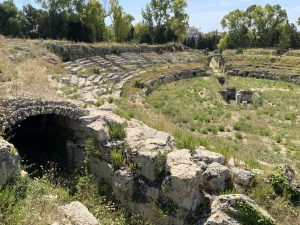
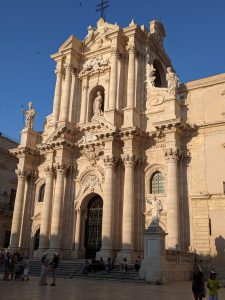
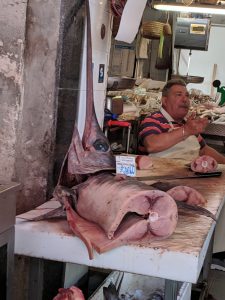
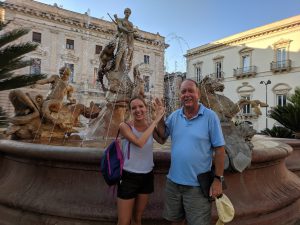
So, having spent 4 nights at anchor in the large bay of Siracusa, we headed south to Porto Palo, near the most southerly tip of Sicily. We anchored in the large, fairly well protected bay. Sonia was the energetic one who swam ashore and then went for a run. She found the water to be a very pleasant temperature. We were content to explore on foot but were disappointed by the amount of rubbish lying by the roadside, sadly a common sight in Sicily when away from touristy areas. This corner of Sicily is much flatter than further north and is home to greenhouses covered in plastic, similar to those we saw in southern Spain. We decided to move on towards Ragusa the following day before the forecasted head winds filled in.
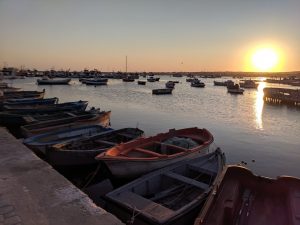
Yet again we found that we motored more than we would have liked during the 5+ hour passage. As instructed to do, we hailed the marina on VHF shortly before arriving so a marinera could meet us outside the breakwater to guide us through the shifting sandbanks that have formed near the entrance and then to our berth. The marina is well equipped but is surprisingly empty of yachts. Apparently it fills up during the winter months with a lively winter community. There are nice beaches nearby, good bike paths and plenty of restaurants to choose from along the seafront but the town of Marina di Ragusa doesn’t appear to offer much else of interest. The town of Ragusa is about 15 miles away perched atop two hills, the magnificent older town, Ragusa Ibla on one and the newer, business center of Ragusa Superior on the adjacent hill. We enjoyed exploring Ragusa as well as the charming fishing port of Marzamemi (where we had an excellent lunch), Noto and a nearby natural reserve (where we had a swim) with Sonia before she returned to Bordeaux. The sad part was that the famed ice cream shop that had been the prime reason for visiting Noto was closed on Monday, the day we visited 😟.



3 Comments
Jonathan
Wow, this really is turning into a voyage and a half. Thanks for writing it up in such detail so we can all enjoy it as well. Fyi, some of the pics this time did not open on one of my platforms. All best J
Cheryll
So glad Sonia could enjoy some of your fascinating trip with you. Too hot for us to even try to get to Bordeaux this year. Stayed in the cooling waters of the Dordogne instead. Sicily is definitely on our list now, so much to see. How is the Italian?
Ruth and Nick Pearman
All pictures opened perfectly and so nice to see the one at the top where we all walked in 2017! You really have managed to fit in a lot of exploring and like Cheryll, we just want to go back – but a floating home seems the ideal way to do it! Rx